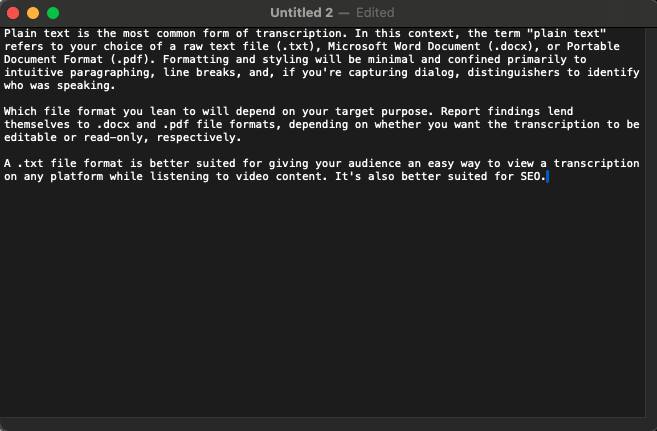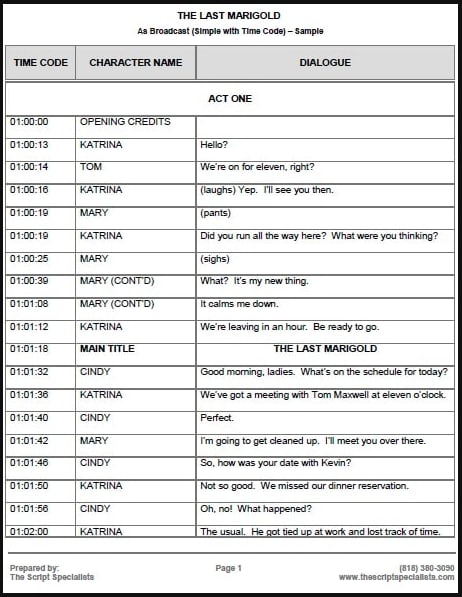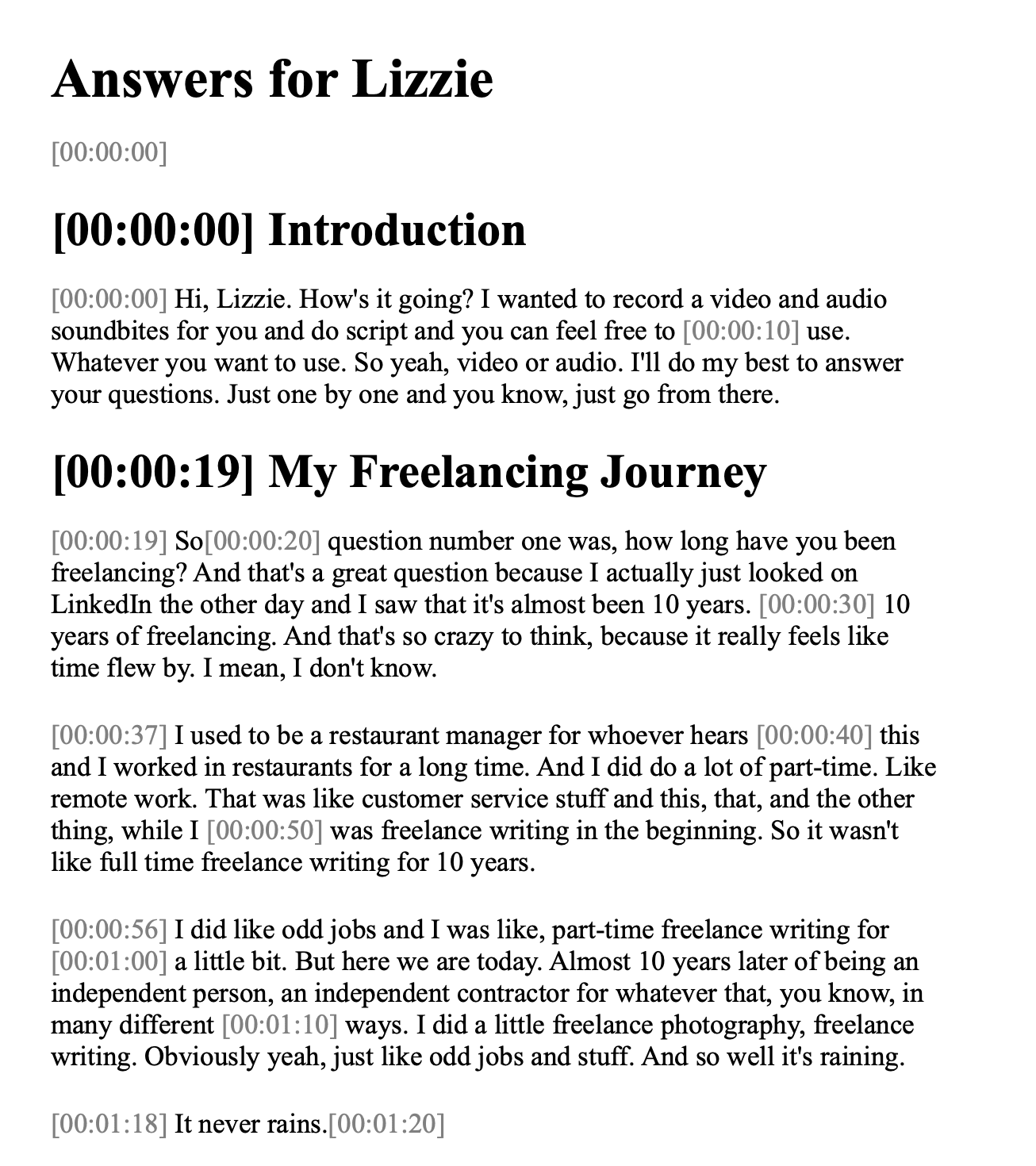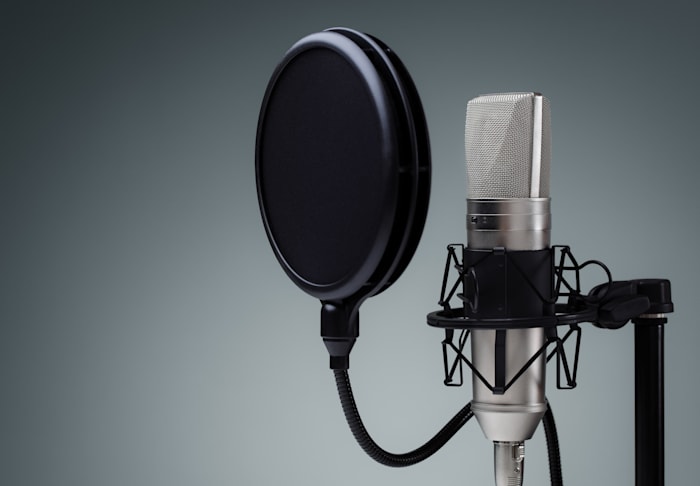What ‘Transcribe’ Means & How to Create a Transcription (2024)
What is the definition of transcribe? Learn the meaning of transcribe and how to get a transcription in this guide.
 February 14, 2024
February 14, 2024 11 minute reading
11 minute reading
If you’ve ever watched a movie with subtitles on because the audio was terrible or there was a really indecipherable accent (like Brad Pitt’s character in Snatch), those subtitles are a transcription.
Transcriptions are used in more than just movies and you’d be surprised how often you come across them. They are useful for helping more people access and understand your content.
This article will go over everything you need to know about transcriptions, transcription services, and where you can find transcribers for your needs.
Find a transcriptionist for hire
What does transcription mean?
When audio or video recordings are converted to a text transcript, that's a transcription. Usually, a transcript focuses on accurately reproducing words as text. However, depending on what kind of transcription you use, the process can also involve recording speech mannerisms, audience reactions (such as laughter or applause), and even background ambient noises.
Verbatim vs non-verbatim transcription
There are two broad types of transcription. Which you choose will depend on both your personal preference and the intended purpose of your transcription.
Non-verbatim transcription
Think of a non-verbatim transcript as a carefully edited formal piece of writing. The transcriber ignores any errors of speech, unnecessary filler words, unintended interruptions, and ambient sounds. The sentence structure will also be cleaned up slightly to ensure the transcript is easy to read and understand.
Non-verbatim transcription produces a polished copy, ideal for capturing meeting records, presenting advertising material, or encapsulating focus group data when non-verbal information isn't required for later analysis.
Verbatim transcription
On the opposite end of the transcription spectrum, we have verbatim transcription. As the name suggests, this process involves the transcription of every utterance, word-for-word. Hesitation, word stumbles, grammar errors, and filler sounds (umm, hmm, and so forth) are all reproduced in the transcript, alongside descriptions of ambient sounds and audience reactions. You're left with a detailed textual recreation of precisely what happened during the voice exchange.
Straight away, you're probably intuiting some of the strengths and weaknesses of strict verbatim transcription. Strict may be ideal for an exchange where emotional nuance is as important as what was said — for example, a customer feedback interview. However, this approach would be inappropriate if you require a simplified and polished message such as promotional copy.
What are transcription services?
A transcription service is a business that converts speech (either through audio or video means) into a written document. These services can include specialities ranging from movie transcriptions, courtroom hearings, to medical notes. And are used for many purposes like educational lectures, learning a new language, informational security, and legal purposes.
These businesses usually charge by the minute of audio that needs to be transcribed and usually market the niche fields of interest they are able to transcribe.
What would you record for transcription?
There are any number of things that you may want to record for transcription later. The most common examples are doctors who make audio notes when treating patients and corporate meetings. But transcription is also used for subtitling in movies, many podcasts will transcribe their shows, and transcription is especially helpful when learning a new language.
Being able to phoneticize the sounds of a language with an unfamiliar alphabet like Hindi for English speakers, is helpful in learning the speaking and listening portion of learning a new language. So, recording example sentences or a word of the day and having it transcribed is helpful for anyone learning that language.
Benefits of transcribing audio and video to text
There are many potential benefits of transcribing audio and video to text, including:
Accuracy: Having a transcription of an audio or video recording gives you an accurate account of what was said that's easy to review and share. This can be helpful for business, legal purposes, voiceover, and more.
Accessibility: Transcribing audio and video recordings can enable those who are deaf or hard of hearing to access your content, making it more inclusive.
Legal compliance: Ensuring you have closed captions (from transcriptions) on your audio and video content can help protect you from discrimination lawsuits.
Improved comprehension: Transcriptions can provide cognitive reinforcement for the audience, giving them more than one way to absorb the message.
SEO: Adding transcriptions when posting audio or video files online tells search engines what your content is saying, which can help it rank for the keywords it contains. Web bots that crawl web pages to rank them can only read, they can't hear. Transcriptions ensure your audio content comes up when people are searching for the kind of content that it contains.
Easier repurposing: Once you have a transcription, it can make it easier to repurpose the content into various formats like emails, blogs, or social posts.
Easier translation: If you want to translate the message into another language, transcribing can make the process much easier as you can send the document to a translator.
Transcriptions are necessary for many situations and helpful in others. If you're publishing any type of audio or video content online, a transcription should accompany it for both accessibility and legal reasons. Plus, transcriptions can be helpful in other situations such as when running a business or going through legal proceedings.
How a transcript is formatted
You also have choices in transcription format — some general-purpose, others tailored to quite specific use cases.
Plain text format
Plain text is the most common form of transcription. In this context, the term "plain text" refers to your choice of a raw text file (.txt), Microsoft Word Document (.docx), or Portable Document Format (.pdf). Formatting and styling will be minimal and confined primarily to intuitive paragraphing, line breaks, and, if you're capturing dialog, distinguishers to identify who was speaking.
Which file format you lean to will depend on your target purpose. Report findings lend themselves to .docx and .pdf file formats, depending on whether you want the transcription to be editable or read-only, respectively.
A .txt file format is better suited for giving your audience an easy way to view a transcription on any platform while listening to video content. It's also better suited for SEO.

HTML document
HTML transcriptions are useful if you mainly embed video content into a website you host and manage. With an HTML formatted document, you gain the option of embedding your transcript directly into the page containing your video footage.
You can even install add-ins to your page that optimize your transcript for a comfortable reading experience while viewing the video. You also have the option of merely publishing the transcript as a separate page on your site.
While HTML is excellent if you host your site, the additional markup coding can be a hassle if you're publishing your transcript to a third-party platform like YouTube or Facebook.

Source: NVIVO
As-broadcast script file format
A more specialized format, As-Broadcast Script files are usually used to transcribe already-existing edited video footage. While this format has various specialized sub-variants for content producers in the film and broadcast industries, most online video developers will seek a format designed to add closed-captioning functionality to their content.

Source: Vitac
Time-stamped file format
A time-stamped transcript provides the exact beginning time for every new chunk of text. Content will usually be time-stamped by paragraph, though if your content is an interview, a transcriber will more likely aim to time-stamp each line of dialog.
There are two everyday-use cases for time-stamped transcripts.
First, they offer a way for a reader to note significant pauses or inaudible segments of an audio track. Legal hearings and detailed customer feedback interviews, for example, may require time-stamped transcripts.
Second, video editors may use time-stamped transcripts to assist in the editing process. A precise breakdown by time will allow a videographer to produce content more efficiently.
Here’s an example of a time-stamped transcript from Descript, an AI-generated transcription service.

With software like Descript, you can adjust various timecode settings for your transcript, like:
How often timecodes appear in your file.
Adding/removing timecodes at paragraph breaks.
Adding speaker labels.
After you export the file, you can proofread the transcription and share it as needed.
3 best ways to transcribe your videos
There are a number of ways to get videos transcribed. Whether you’re looking to transcribe a university lecture, an episode of The Washington Post podcast Post Reports, or just get a phonetic transcription of a new language, there are things you need to consider when deciding which way will work best for your purposes.
Below are three of the best ways to transcribe a video.
Transcription software
Now with AI in content marketing, there are programs that can accurately transcribe audio and video files. Programs like Descript, have an auto-transcription feature that’s available even in its base free plan.
Descript reports a 95% accuracy in recognizing speech sounds as long as the audio quality is clear. This program even supports transcription in twenty-three different languages, including Portuguese, Italian, and Malay.
But, just keep in mind that highly technical or specialized language may not be in a transcription software’s word list. There is specialized speech recognition software that can pick up certain languages, but they aren’t perfect.
So, if you’re looking to transcribe things like legal or medical notes, you may be better off hiring a professional.
DIY
Another option is to do the transcribing yourself. While this could save you money, it will cost you time and can add up if you need transcriptions regularly.
On average, one hour of audio takes a professional four to six hours to transcribe. It may also take time to develop the ability to listen carefully while typing accurately and quickly. This option will depend on the amount of time you have available and your skillset.
Hiring a professional
Lastly, you can hire a freelancer to transcribe files for you. Freelancers and virtual assistants who specialize in transcriptions will often have the experience to deliver high levels of accuracy relatively quickly. They are typically more affordable than professional transcription companies, as they have less overhead, and they are often more accurate than software programs alone.
Freelancers often have specializations in particular niches, which enables them to deliver higher levels of accuracy by understanding the context of the subject matter. In many cases, hiring a freelancer will be a happy medium that gets the job done well at a reasonable price.
Hire the best transcription services on Fiverr
Finding a good transcription service can be difficult and will really depend on what you need to transcribe. Here are five of the best transcription specialists featured on Fiverr to help you get started in figuring out what rates and specialities will work for your needs.
Adaiah Cole
Adaiah Cole is a Top Rated Fiverr contractor. She offers a number of verbatim transcriptions for things like; podcasts, sermons, interviews, and webinars. Her base rate is $10 for 15 minutes of audio, allows for unlimited revisions and only needs one day to deliver her transcription.
Lara A Cantos
Lara A. Cantos is another Top Rated Fiverr transcriber. Among her past clients are large corporations like Amazon, Brother, and Lidl France. On top of that, Cantos can even deliver transcriptions in Italian, French, German, English (British and American), and Spanish. Her rates start at $15 for 10 minutes of audio and included unlimited revisions.
Aika Sakura
Aika Sakura is a level 2 contractor on Fiverr and not only transcribes, but also offers translated transcriptions of Japanese to English and English to Japanese. Sakura’s rates start at $5 per minute, is able to handle up to seven speakers, and allows for one revision.
Minjoo
Minjoo is a level 2 Fiverr transcriber who specializes in transcribing Korean audio and video. Minjoo’s rates are separated by type of transcription service; ordinary stories start at $20 with no time limit, academic papers and current affairs start at $30, and medical/legal/other technical writings start at $50.
Ray J
Ray J is a Fiverr’s Choice transcriber who specializes in Chinese transcriptions of various dialects. What’s interesting is his basic package is a quick transcription rate of $5 for ten minutes of audio that he runs through a speech to text program, but then edits for accuracy. His manual transcription rates range from $1/min to $3/min.
Hire professional transcription specialists on Fiverr today.
Transcribe meaning FAQ
What is an example of transcribing?
An example of transcribing is when court reporters write out what is said during a trial into written copy. Or, when someone writes out lecture notes in braille for blind students.
Does transcribe mean copy?
Transcribe comes from the Latin transcribere, (a form of scribere) which means “to copy, write over, or transfer. The definition of transcribe-verb is: to write out a copy.
The Oxford Advanced Learner’s Dictionary lists transcribe as a verb with the phonetic pronunciation being trænˈskraɪb and the definition as “to record thoughts, speech or data in a written form or in a different written form from the original.”
What is the other word for transcribe?
The American English Thesaurus has many synonyms for transcribe like: translate, on record, write down, and inscribe.
What does transcription mean in text?
For text, it means a written or printed representation of something. For music, it means an arrangement of a piece of music. And, in biochemistry, transcription refers to the genetic information of DNA being copied onto a new strand of RNA.



